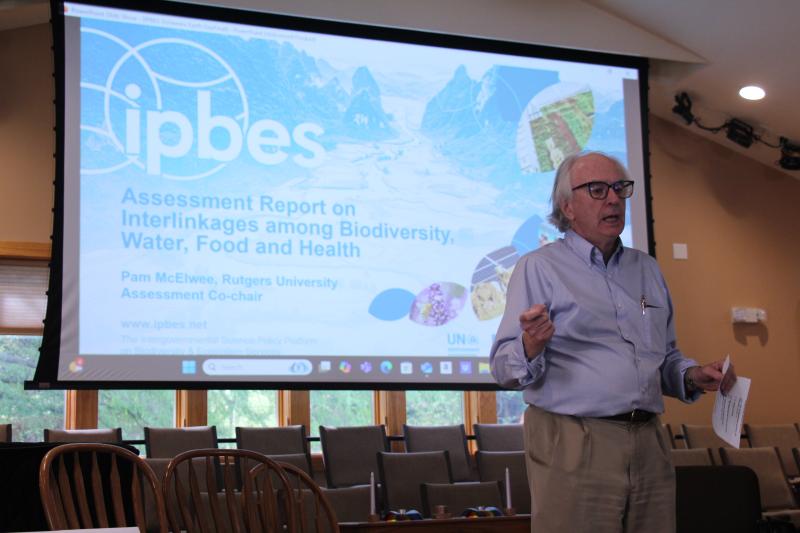Vanishing illuminated beetle shines light on environmental threats
Jane Gruenebaum vividly recalls catching fireflies when she was young growing up in Ohio.
“When I was a child many years ago, one of the pleasures we had in the summer was, we got that mason jar and poked holes in the top, and ran and got the fireflies,” she said. “You put the cap back on and took them to your room. In my household, you let them go again because we didn’t want to kill them. I haven’t seen a firefly in years. Not one. Think about it. Not one.”
At an Earth Day event April 25 at the Unitarian Universalists of Southern Delaware church west of Lewes, Gruenebaum said fireflies were common when she moved full time to a home outside Rehoboth Beach in 2018. She said vanishing fireflies illustrate the importance of protecting the environment.
The beetles are voracious predators, helping to maintain the balance of the ecosystem by feeding on snails, slugs and earthworms. A biochemical reaction in a light organ in the lower abdomen of the firefly produces illumination that – in addition to attracting children with mason jars – is part of mating rituals and warns off predators.
The Bethany Beach firefly will likely become endangered in the foreseeable future, according to the U.S. Fish and Wildlife Service, which last year proposed adding it to the federal endangered species list. The fireflies’ numbers are dwindling due to climate change, residential development, human recreation activities, pesticides and invasive plant species.
With deep federal budget cuts to many agencies and programs, the burden of protecting the environment will fall to state and local governments, and nonprofit organizations that could also soon feel the budget axe fall, threatening their existence.
The April 25 event featured a half-hour video of a presentation by Pamela McElwee of Rutgers University, co-chair of an international assessment of links between biodiversity, water, food and health, commonly known as the Nexus Report. The three-year project culled data from about 6,500 sources of information.
“We as scientists, all volunteers, all worked together to try to find answers to what are the important interlinkages between biodiversity, climate change, water, food and health?” McElwee said. The problems are all connected, as are the solutions, she said.
Rep. Claire Snyder-Hall, D-Rehoboth Beach, said bipartisan support to shift the state’s energy production to renewable energy recently collapsed as Republicans have begun to undermine the efforts at the national, state and county levels.
She cited the U.S. Wind proposal to build more than 100 offshore wind turbines to produce enough energy to power 1.5 million homes through a power grid serving Delaware and Maryland. Sussex County opposed a substation in Dagsboro needed to make the project feasible, and Kent County opposed the turbine construction, she said.
The ongoing housing boom in Sussex County worries Snyder-Hall, who noted that it led to three newcomers unseating incumbent county council members in the November election.
“Development in and of itself is not a bad thing,” said Gruenebaum, one of the newcomers on county council. “In some areas, it is not only good, but it is needed. But it’s the way in which it’s done.”
Focus on development’s effects on traffic and healthcare are usually obvious, but people don’t realize the harm to the environment, she said.
Gruenebaum encouraged people to take action at the local level, like electing candidates who will protect the environment, donating to organizations with like goals, and replacing grass with pollinator gardens, trees or meadows.
One group that needs donations is the Delaware Center for the Inland Bays, based in Sussex County, which could soon lose 85% of its funding if all federal aid is canceled, Gruenebaum said.
Ric Moore, who worked for the U.S. Department of Energy for 37 years and is now on the board of Delaware Sustainable Energy Utility, said it is important to get young people involved in finding solutions to environmental problems.
“We can choose change,” Moore said. “We can create and innovate.”
“The solutions are local,” said John Mateyko, chair of Transformative Delaware, who organized the April 25 event.
“It basically means that our local communities are going to be on the forefront,” McElwee said in her recorded presentation. “Nobody’s coming to save us. We’re going to have to do these things ourselves.”


















































